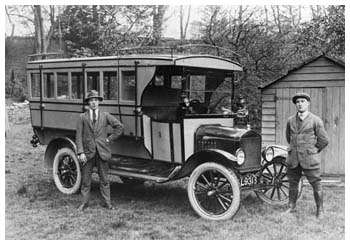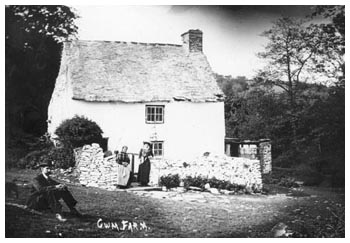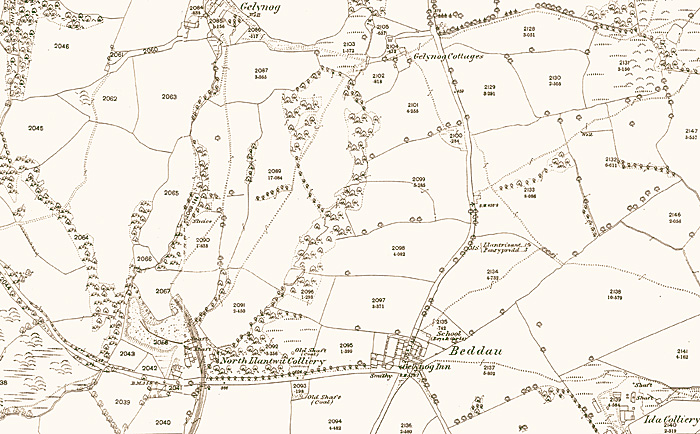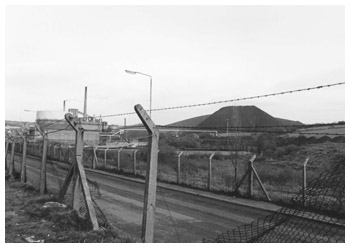
| Beddau | |
As with many settlements in the Taff Ely area, the village of Beddau owes its existence and growth to the coal industry. As late as 1861, the census shows that Beddau consisted only of a few farms including Llwyncrwn Uchaf and Gelynog. The area's most important farm was Ty'n-y-nant situated near Nant Myddlyn. Nearby stood Tynant Dingle (woodlands) where the squire of Castellau would participate in fox hunting. Most of the farms surrounding Beddau are over three hundred years old. |
Cwm Farm which was later to be the site of Cwm Colliery |
Above: This 1878 map of the area clearly shows the lack of housing around Beddau at that time |
|
The 1860s saw the beginnings of the development of the village of Beddau. A number of coal pits began working in the surrounding areas, Ty'n-y-nant and Gelynog pits being the most important. Many of the sources of coal were relatively short lived. As a result of this industrial development cottages and a Post Office were built on the Square, Beddau. We can see from looking at the 1871 census that the vast majority of the village's inhabitants were miners. A few years later the Ordnance Survey map of 1878 shows us that the village also comprised of Bethania Baptist Chapel (1867), Gelynnog Inn (1871) and Beddau School (1877). The school's first headmaster was Mr Rees Morgan who eventually became the first headmaster of Pontypridd Boys Grammar School. Transport was almost non-existent and many people walked to Pontypridd for shopping and entertainment. The further development of Beddau remained relatively static until 1909. That year saw the first turf cut on the site of the Cwm Colliery. During the following years houses were built near the colliery including streets that eventually came to be known as Commercial Street, Mildred Street and Parish Road. Large scale developments didn't start until 1921 when local councils were empowered to provide houses for the first time. Unsurprisingly Beddau's school population increased to the extent that a new school was opened in February 1931 as Beddau Senior School. |
|
 |
With the community increasing rapidly there was a need for transport. Beddau Halt had opened in1909 but was first known as World's Ends and by the 1920s bus services ran between Beddau and Pontypridd. The inter-war years saw the establishment of a number of places of worship. The original church at Beddau was opened in 1921 and is now the Church Hall. It was known as St John's Church. The present church is dedicated to Saint Michael and All Angels and opened its doors in 1936. Mount Pleasant (1924) and Zion Church (1921) also played roles in the religious life of the community.
Left : One of the first bus services ran from Beddau to Pontypridd |
| Places of entertainment were opened to cater for Beddau's inhabitants. The Welfare Hall and Institute was opened in October 1933. Concerts, dances and even boxing matches took place there but in 1935 it became the Gaiety Cinema. The cinema closed in 1964 and today the building is a social club. Mount Pleasant Park was opened in 1938 although work on it wasn't completed until after World War II and in 1940 a health clinic opened. | |
| Cwm Colliery | |
| The sinking of Cwm Colliery in 1909 by the Great Western Colliery Company Limited marked the beginnings of Beddau's rapid development. The company had been incorporated to sink pits in the Pontypridd area to provide steam coals for the Great Western Railway. The wife of the company's Managing Director, Mrs C.H. James, had the privilege of cutting the first turf. Among the local dignitaries were Lady Margaret and Lady Mildred Bramwell of Tir Mab Ellis. Their names were to continue an association with the colliery because the two shafts sunk were better known as the Margaret and Mildred Pits. Sinking operations were still continuing in 1913 when the pit employed 212 men. By 1934 it was in full production employing 100 men on the surface and 780 men underground. Powell Duffrun Steam Coal Company acquired the colliery in 1928 and worked them until the mines were nationalised in 1947. | |
Cwm Colliery developed throughout the inter war years and after World War II, both manpower and production increasing significantly. An underground railway linking the Maritime Colliery, Pontypridd with Cwm was completed in 1931. In 1957 a similar railway linked Cwm with Coedely Colliery. The merger of these two pits created the largest colliery in the South Wales Coalfield. Production and manpower reached a peak in 1960 as Cwm Colliery employed 1,470 men and produced 324,794 tons. |
Cwm Colliery picture in 1977 |


